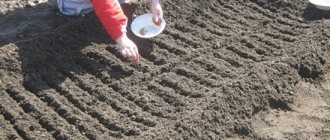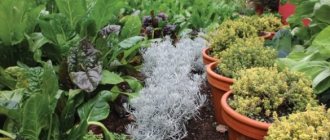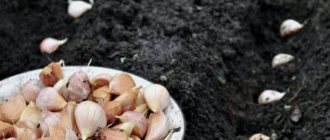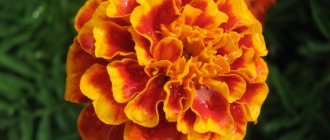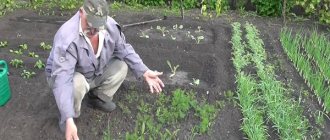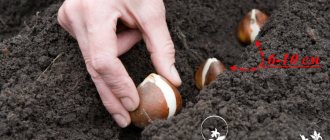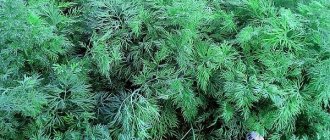Typically, summer residents sow dill in early spring, immediately after the last snow has melted.
At the same time, self-sowing dill, freely “walking” around the site, by this time is already producing the first shoots. So why not sow dill before winter to enjoy a rich harvest in early May?
If you do everything wisely, complete success awaits you!
From the article you will learn how and when to plant dill in the fall, from choosing a variety to harvesting the succulent greens.
Is it possible to plant dill before winter: the pros and cons of the method
To find out whether it is possible to sow dill before winter in your area, you need to take into account the characteristics of the winter climate. If there are long thaws in winter with high temperatures above zero (above +5 degrees), the seeds will probably hatch ahead of time. Then the next serious frost will cause their death.
Fragile seedlings can also be caught by a sudden cold snap in spring . To prevent this from happening, when sprouts appear, insulate the bed with non-fabric or install arcs and stretch the film over them.
There is another small drawback to this sowing method: you will need to increase the sowing rate from 1.2-1.5 grams to 1.6-1.8 grams per square meter. That is, at least 20-30% of the usual amount.
Two tiny minuses more than cover the five big pluses of winter planting dill:
- Early harvest. Early ripening dill sown in autumn is ready for harvesting 10-14 days earlier than usual. This is explained by the fact that during the winter, moisture in the soil dissolves the essential oils with which the seeds of the crop are saturated. At the first warming in spring, they swell and sprouts emerge from the soil.
- More juicy, aromatic greens. During the winter, fertilizers applied to the soil when preparing the bed have time to reach the desired condition and are easily absorbed by plants. The plants develop quickly and grow a lot of lush greenery.
- Healthy and strong plants. The bulk of harmful insects wake up in May, when the dill has already grown and has become unattractive to them. And the dill has undergone natural hardening and now it is not afraid of short frosts in March.
- Less work in the spring. At this time, the summer resident begins to completely park. Therefore, it is important to transfer some tasks to the fall - for example, sowing winter-hardy crops and pruning garden and berry plantings.
Harvesting and storage
When greenery appears, it is picked off and used for its intended purpose. If early varieties are planted, a large harvest of greenery is harvested after 35 days. The greens are picked in the morning, after the dew has disappeared.
Dill is perfectly stored dry and frozen; some housewives sprinkle it with salt and store it in jars, but usually the first green, rich in vitamins and nutrients, is quickly eaten fresh.
Winter sowing has its advantages. This dill grows incredibly powerful tops, does not bloom for a long time, and does not bolt. In addition, it is not afraid of frost and is ready for cutting 2 weeks earlier.
https://fermer.blog/bok/ogorod/ukrop/vyraschivanie-ukropa/posadka-ukropa/3244-posadka-ukropa-pod-zimu.html
https://ferma.expert/rasteniya/travy/ukrop/posadka-ukropa-pod-zimu/
What varieties of dill are suitable for winter sowing?
Early ripening blooms quickly and is not as productive. But at the same time it grows literally before our eyes.
For November sowing it is better to use early varieties. This type of dill produces rather scanty plants and quickly acquires umbrellas. But it ripens a week and a half earlier than late and mid-late varieties.
Bush dill of medium and late ripening is more productive and suitable for repeated harvesting of greens.
I advise you to make two mini-beds for dill on your site with different growth rates. This way you will provide yourself with spicy herbs until mid-summer.
When purchasing seeds, also pay attention to the winter hardiness of the variety and its propensity to stem.
The following varieties of dill have proven themselves well:
- Early ripening - Early miracle, Aurora, Gribovsky, Grenadier.
- Middle and late - Alligator, Patterns, Moravan, Amazon, Kibray, Borey, Buyan, Salyut, Umbrella, Anna.
Varieties for the Moscow region
Any variety of crop is suitable for the Moscow region. The climatic conditions in this zone are favorable and growing greenery will not be difficult. The best varieties for the Moscow region are presented below.
For open ground
The best varieties for open ground:
- Redoubt is an early ripening variety. The height of dill stems reaches 28 cm. Dill is ready for cutting 35 days after planting the seeds in open ground.
- Dalny is another early-ripening variety of dill. The height of the stems is from 29 to 25 cm. The shade of the leaves is dark green.
- Kibray is a mid-season variety for open ground. The height of the stems is 40 cm. The dill branches are lush and thick, the greens have a pleasant dill aroma.
- Alligator is a mid-season variety characterized by tall stems. Their length reaches 160 cm. Dill greens are cut 40–45 days after planting.
Most varieties are planted in open ground.
For the greenhouse
Suitable varieties for the greenhouse:
- Gribovsky is an early variety for greenhouses. The height of the stems is from 20 cm. Suitable for harvesting for the winter. The aroma is pleasant, the greens are meaty.
- Umbrella - greens ripen 40–45 days after planting in the greenhouse.
The height of the plant in some cases exceeds 1.8 m.
Any variety can be grown in a greenhouse, providing favorable conditions.
Timing for sowing dill before winter
The main mistake that novice gardeners make is planting dill too early before winter.
I advise you to start this task when the soil freezes to a depth of 2-3 centimeters and three conditions are met:
- The long-term forecast does not predict warming of the weather for the next 10-14 days.
- Over the past week, daytime temperatures have remained in the range of 0…+3 degrees.
- At night it froze to -1...-3 degrees.
In the middle zone, such weather does not set in until November-December.
How to care?
Dill care is minimal. In most cases, regular watering and fertilization are enough for it. To prevent the appearance of pests, the bushes are periodically inspected.
Watering
Dill loves moist soil, but excess moisture in turn leads to the development of diseases and rotting of the stems. You need to water your greens with warm water 3-4 times a week. In dry weather, the amount of watering is increased. The main thing is not to water the plants with cold water, otherwise they may get sick and die.
Top dressing
Mullein solution or nitrogen-containing fertilizers must be added to the soil for growth. It is this element that dill needs most. Nitrogen promotes the growth of leaf mass. Nitrate, ammonia water or urea are used as nitrogen-containing fertilizers.
Weeding
Weeding is not necessary if there are no weeds in the beds. Once a week, the beds are loosened to saturate the soil with oxygen. This kind of weeding is quite enough for the plant. In order for dill to grow better, it is thinned out.
Preparing a bed for dill
The dill bed is made no wider than 100 centimeters, otherwise it will be inconvenient to care for the plantings
Spicy grass grows well in sunny areas with light to moderately rich soil. It is advisable that the garden bed be protected from the cold north wind by garden buildings or bush crops.
On acidified soil, dill leaves turn yellow and curl. Such soil must be limed in the fall.
I recommend placing the plot after crops that have received a generous amount of organic fertilizer. Dill is sown where potatoes, onions, tomatoes, beets or cabbage previously grew. Unsuccessful predecessors for it are carrots and various types of celery.
The bed for greenfinch is prepared a month before autumn sowing. The work consists of seven stages:
- They outline a garden bed. It is desirable that it extends from south to north.
- Clear the ground of remnants of tops and weeds.
- Phosphorus-potassium fertilizers are scattered at a rate of 20-30 grams per square meter. I do not recommend wasting scarce compost and humus on dill. When there is a lot of nitrogen in the soil, greens accumulate nitrates. And we don’t need this at all.
- The bed is dug up using a shovel, all large clods are broken up and the surface is leveled with a rake.
- Mark grooves at a distance of 10 to 20 centimeters and a depth of 4-6 centimeters. The larger the dill bush, the wider the row spacing. And the grooves are made so deep for two reasons. Firstly, the soil will have settled slightly by the time of planting. Secondly, when sowing in autumn, the seeds are covered with 3-3.5 centimeters of soil (not 1-2 centimeters) so that they do not freeze in winter.
- The bed is covered with film so that it does not become overgrown with weeds and is not washed away by rain.
- Prepare a soil mixture for filling the furrows - humus (compost) plus peat plus garden soil in a ratio of 1:1:1. Bags of earth are kept warm so that the soil in them does not freeze.
There is also a method of sowing dill randomly. In this case, there is no need to cut any furrows; the seeds are simply fanned out over the dug up and fertilized soil. But I don't like him. It is inconvenient to care for such plantings - thinning and weeding. And if the soil hardens by the time of sowing, you will not be able to properly fill the seeds.
Watch the video to see how a regular board helps make smooth and neat grooves:
How to plant correctly in the Moscow region
The quality and quantity of the future harvest depends on the correct planting of any agricultural crop. Particular attention is paid to this stage of cultivation. Sowing dill is not difficult, but if you observe the necessary planting conditions, you will be able to grow a rich harvest.
Preparation of seed material
Preparation of planting material is carried out in several stages. First, the seeds are placed in cheesecloth and soaked in warm water. The water is changed several times a day. They do this for 3 days.
Then take the seeds out of the gauze, lay them out in a thin layer on a damp cloth, and cover with a second piece of cloth. Leave them like this for 4 days. Periodically spray the fabric with water. Before planting in the soil, they are dried for 3 minutes.
Sowing
Sowing of dill begins after the soil has warmed up well. The optimal planting dates are the end of April and May. Planting later varieties will provide greenery in the fall.
Before planting, dig up the soil well and apply mineral or organic fertilizers. Then make shallow furrows and sow dill seeds.
It is not recommended to cover them heavily with soil, otherwise the sprouts will not sprout well.
Water the beds generously using a watering can.
How to sow dill before winter
So, winter cold has arrived in your area and perhaps even the first snow has fallen.
It's time to start the autumn sowing. Remove the snow cover and film from the bed and distribute the dry (!) seeds along the furrows. Do not forget that you need to sow the seeds more densely than in the spring.
Sprinkle the grooves with the stored soil, roll it lightly and additionally cover with mulch of chopped straw, sawdust, dry leaves, peat, humus - with a layer no thicker than 1-2 centimeters.
How to care
Caring for dill in the Moscow region includes traditional techniques, given that the spice is quite unpretentious. It will provide the gardener with early greens with minimal effort and time.
Watering
It is necessary at a later date, when the greenery begins to grow. In early spring, this procedure is not necessary, since the soil is well moistened by melt water. Watering is carried out as the soil layer dries. You can use drip irrigation or irrigation. Dill is also responsive to leaf spraying.
Top dressing
Dill is capable of accumulating mineral elements in the leaf part, so you should not get too carried away with mineral supplements. Since the growing season of the plant is short and lasts up to 40 days, 1-2 feedings are quite enough.
Maximum dose per 1 sq. m. is:
- 10 g potassium salt;
- 15 g ammonium nitrate;
- 10 g superphosphate.
The application is a one-time application and the specified rate should not be exceeded.
Fertilizing with organic matter is good: mullein or bird droppings, which are infused and diluted in standard proportions.
Weeding
As the dill bushes grow, they can be “clogged” by weeds. It is important to ensure their timely removal, otherwise the spice branches will stretch out and it will lose its rich taste and aroma. Weeding is carried out as needed.
Caring for dill in spring
Good neighbors for dill are potatoes, onions, lettuce and cucumbers.
As soon as the first timid sprouts appear from under the ground, the bed is covered with film and after a few days the dill sprouts in a thick brush.
Then arches are dug over the bed and agrofibre is thrown over them. At the same time, the first careful loosening of the spaces between the rows is carried out.
Caring for winter dill plantings includes:
- Infrequent watering. In spring, the soil is already saturated with moisture, so you will only need to add water to the garden bed during a severe and long drought.
- Regular weeding. Weeds are extremely aggressive and severely suppress young seedlings.
- Thinning of seedlings. Do not delay in removing excess plants - if you are late, the dill will quickly throw out the stem and generally produce little greenery.
Early varieties of dill are not fed or treated with chemicals against pests. Dill that grows as a bush can be fertilized with full mineral fertilizer after mass cutting.
Video on how to save dill from aphids:
Preparing for landing
Dill is unpretentious. It can be planted in any soil, but the more nutritious the soil, the greater the harvest. It is not necessary to process the crop seeds before sowing, but in this case, due to their specific composition, they take a long time to germinate.
When to plant dill seeds
Dill for greens can be planted all year round on a windowsill or in a greenhouse. In the presence of positive temperatures and sufficient lighting, the crop grows quickly, growing large, bright green leaves. When forcing greens in winter, additional lighting is required, otherwise the leaves will lack the characteristic spicy smell.
Dill can be planted from early spring to late autumn. Grass is not afraid of cold temperatures down to -5 °C; germination begins at +3 °C. To obtain early greenery, dill seeds begin to be sown after the snow melts. The last sowings in open ground are carried out in late October - early November.
To continuously obtain greenery, the future dill bed is divided into parts, each planted 10–15 days after the previous one.
In the Moscow region, dill is planted in the spring after the soil has thawed. Early sowing in February thaws is possible. Shelters made of film or non-woven material accelerate the appearance of greenery and protect against return frosts.
Watch the story about sowing:
Place and soil for planting
Dill is undemanding to growing conditions. Loose, neutral soils that retain moisture well are favorable for the plant.
It is not difficult to grow dill in the open ground at your dacha - it is only important to provide a sufficient amount of light and water. Dill can be planted in sun or partial shade.
In a sunny garden, the leaves have more flavor, while in partial shade the greens are juicier and the leaves are larger.
Dill can be planted in sun or partial shade. In a sunny garden, the leaves have more flavor, while in partial shade the greens are juicier and the leaves are larger.
In open and closed ground, dill is grown in designated beds or as a compactor for other plants. The culture does not combine with fennel, parsnips, celery, basil, and watercress. How can you plant dill in the same bed:
- with zucchini;
- pumpkins;
- tomatoes;
- cabbage;
- carrots.
The leaves will not create shadows, will not interfere with the development of other plants, and the spicy aroma will repel pests.
Preparing dill seeds for sowing
The timing of how many days the dill sprouts depends on the conditions:
- loose soil – 12–20 days;
- dry or heavy soil – up to a month.
Due to the large amount of essential oils, dill takes a long time to germinate. Therefore, it is advisable to soak the seeds before planting. Pre-sowing treatment allows you to increase germination several times. For dill to sprout quickly and quickly, you need to:
- Place the seeds in a cloth, tie them into a knot, and place them in hot water (60 °C) for 1 minute. Place in water at room temperature and change it 3 times a day. Keep for 2 days. Dry before planting.
- In 1 tbsp. dilute water with 1 tsp. hydrogen peroxide. Place the seeds in the solution for 6 hours. Prepare a fresh solution and soak the seeds again.
- Pour the seeds onto cheesecloth and tie them into a knot. Rinse in vodka or alcohol diluted 1 to 1 with water, poured into a saucer. The liquid will turn dark brown, indicating that essential oils have been washed away from the surface of the seeds.
Watch a video about planting using seedlings:
Diseases and pests
The most common type of aphid found in garden beds is the willow-carrot aphid. During a season, the pest can reproduce up to 17 generations, which makes their invasion a real disaster for gardeners.
To prepare the vinegar solution you need to take 1 tsp. vinegar and 1 liter of clean water. Stir and pour into a spray bottle. You can use apple cider vinegar instead of regular vinegar. It is no less effective in the fight against aphids.
To prepare a solution based on apple cider vinegar, take 1 tbsp. l. vinegar and 1 liter of water. Mix and process in the same way as in the first option.
Zoning
For each climatic zone, certain varieties of dill are selected, especially when it comes to winter sowing. Buying any package of seeds and “scattering” them in the fall is imprudent. After all, each variety differs in terms of ripening, lushness of foliage, aroma and taste.
Breeders offer a fairly large list of varieties that are zoned for certain zones. Varieties for central Russia, which includes the Moscow region, are most in demand by gardeners. They have the characteristics necessary for a temperate climate:
- good germination;
- friendly return of green mass;
- rapid growth;
- adapted to low temperatures and temperature changes.
An indicator such as germination energy is low in dill. The seeds germinate very slowly, like other members of the Apiaceae family. Due to winter sowing, the shell softens faster and makes it possible for a sprout to appear immediately when the weather gets warmer.
